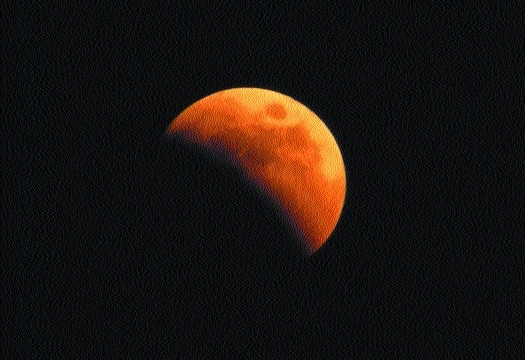Three eclipses in one calendar month
| Date :31-May-2020 |

By Rajendra Diwe :
Two Lunar Eclipses on June 5 and July 5
Sharvari Naama Samvatsar, the new Hindu calendar Shaka 1942, started from Chaitra Shuddha Pratipada on March 25, 2020 is very unique in number of ways. The entire country is observing lockdown to contain Covid-19 pandemic since March 24, a day before the start of the new calendar year. The year also is full of events like transits of major planets like Jupiter, Saturn, Venus, Pluto, Rahu, Ketu, Mercury, Mars etc. The retrograde and straight movements of these planets are happening throughout the year. In addition to this, five eclipses will be witnessed in Sharvari Naama Samvatsar.
According to Maharashtriya Panchang of late Dr Harihar Sitaram Rajandekar which has completed 100 years in 2020, “It is a very common phenomenon to have at least four eclipses in a calendar year. These four eclipses include two solar and two lunar. Having five or even six or seven eclipses in a single year is a rare phenomenon. In the year 2020 there will be three lunar eclipses and two solar eclipses. Out of these five, three eclipses will be between June 5 and July 5.”
All the prominent almanacs across the country have given detailed account of these five eclipses being held in this Shaka era. According to Rajandekar Panchang, Date Panchang, Kalnirnaya Mothe Panchang, Nirnay Sagar Panchang, Ruikar Panchang, Shri Martanand Panchang, Panchang Diwakar, Tamil Panchang, Shaka 1942 or Vikram Samvat 2077 is the year of turbulence due to five eclipses. The panchangs say, “From June 5, there will be three eclipses in one lunar month. It will be the last time this happens until the year 2029. From 2000-2050, there are three eclipses in one lunar month 14 times. Meanwhile, in a calendar month, three eclipses are rare. In 2020, there will three eclipses in one lunar month the period of time between successive new moons or full moons – in June and July 2020. Lunar eclipse or Chandragrahan is termed as Chhaya Kalp or Mandya Chandragrahan or Penumbral lunar eclipse to be held on June 5 and July 5.
Kankanakruti Surya Grahan or Kankan Surya Grahan or Annular solar eclipse will be seen on June 21, 2020. A solar eclipse always comes within approximately two weeks of a lunar eclipse, and usually in a single pair (one solar and one lunar). Then, generally, another pair of eclipses (one solar and one lunar) comes some six months later.” According to NASA eclipse expert Fred Espenak, “Three eclipses fall in the same calendar month only 12 times during the five-century span from 1801-2300. Six times there are two solar eclipses and one lunar eclipse in one calendar month. Six times there are two penumbral lunar eclipses and a total (or annular) solar eclipse in one calendar month.”
The Rajandekar’s Panchang says, “Penumbral lunar eclipse to be held on June 5 will be visible in India while another eclipse will not be visible. The penumbral eclipse begins on June 5 at 23:15:51 in Akola; the maximum eclipse will be seen at 00:54:55 on June 6 while it will end on June 6 at 02:34:03. The Moon is above the horizon during this eclipse, so with good weather conditions in Akola, the entire eclipse is visible. The next eclipse will begin on July 5 at 8.37 am in Akola while it will end at 11.22 am on the same day. Lunar Eclipse(Penumbral) on June 5 will be seen in much of Europe, much of Asia, Australia, Africa, South/East South America, Pacific, Atlantic, Indian Ocean, Antarctica while Lunar eclipse on July 5 will be seen in South/West Europe, Much of Africa, Much of North America, South America, Pacific, Atlantic, Indian Ocean, Antarctica.” According to experts, “During this Mandya Chandra Grahan, the Earth’s main shadow does not cover the Moon. As the Earth's shadow (umbra) misses the Moon during a penumbral lunar eclipse, there are no other locations on Earth where the Moon appears partially or totally eclipsed during this event. A penumbral lunar eclipse can be a bit hard to see as the shadowed part is only a little bit fainter than the rest of the Moon A penumbral lunar eclipse takes place when the Moon moves through the faint, outer part of Earth's shadow. This type of eclipse is often mistaken for a normal Full Moon. There will be a penumbral lunar eclipse darkening the Strawberry Moon on June 5/6, the Buck Moon on July 4/5, and the Beaver Moon on November 29/30, depending on the time zone.”
